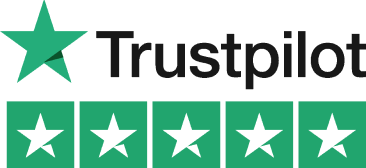Capital Allowances Explained: Your Self Assessment Guide

Capital allowances play a pivotal role in reducing your taxable profit, subsequently lowering your tax liability. They allow you to offset expenses related to business assets, such as machinery, equipment, and vehicles, against your tax bill. For many self-employed individuals and business owners, understanding capital allowances can be the key to significant tax savings. However, the process of declaring these allowances on a self assessment tax return can be daunting. This guide will walk you through the essentials of capital allowances and how to declare them using the Pie Tax App and the Expert tax assistants available on the Pie app.
Capital allowances are deductions you can claim against capital expenditure you've incurred while running your business. These allowances can substantially decrease your taxable income, paving the way for a smaller tax bill. From Annual Investment Allowance (AIA) to Writing Down Allowance (WDA), the types of capital allowances available are diverse, and each has specific eligibility criteria.
When it comes to declaring these allowances, having a clear understanding of the types of assets eligible and the correct way to claim can save you both time and money. Using digital solutions like the Pie Tax App and consulting with Expert tax assistants available on the Pie app can make the entire process seamless and more manageable.
Types of Capital Allowances
There are various types of capital allowances, each designed for different kinds of business expenses. These include the Annual Investment Allowance (AIA), Writing Down Allowance (WDA), and First-Year Allowance (FYA). Understanding which applies to your business is essential for optimising tax savings.


Key Assets for Allowances
Assets eligible for capital allowances typically include machines, tools, and other business equipment. Vehicles used exclusively for business purposes can also qualify. Keeping detailed records of these assets is critical for accurate self-assessment filing.

Annual Investment Allowance (AIA) lets businesses deduct the full value of qualifying capital items up to £1 million. It provides an opportunity for substantial yearly tax deductions.Annual Investment Allowance

Writing Down Allowance (WDA) allows you to claim a percentage of an item's value over several years. The standard rate is 18%, while certain items fall under 6% for long-life assets.Writing Down Allowance

Declaring Capital Allowances
Declaring capital allowances involves meticulous documentation and accurate calculations. The first step is to identify all eligible expenses. Next, categorise these expenses into their respective allowance types AIA, WDA, or FYA. Use simple tools like a spreadsheet for initial data entry to track these expenses throughout the year. Consult the Pie Tax App for additional resources and templates to streamline this process.
Once you've gathered all the necessary details, you can proceed to declare these on your self assessment form. Navigate to the "Capital Allowances" section and enter the totals for each allowance type. Double-check your entries to ensure that you're claiming the correct amounts against eligible assets.
Benefits of Expert Help
Engaging Expert tax assistants available on the Pie app can significantly simplify the complexities involved in claiming capital allowances. These experts understand the evolving tax laws and can offer personalised advice tailored to your business needs.
In addition to personalised advice, the Pie Tax App offers tools and resources to help you keep track of your assets and expenses more efficiently. This digital aid ensures that you are well-prepared when it comes time to file your self assessment, minimising the risk of errors and maximising your potential tax savings.

Top Tips to Maximise Capital Allowances Effectively

Identify Eligible Assets Ensure you identify all eligible business assets like machinery or equipment. Claiming these correctly can reduce your taxable profit.

Utilise Annual Investment Allowance Take advantage of the Annual Investment Allowance (AIA) for qualifying purchases. This allows you to deduct the full cost of eligible assets.

Seek Expert Guidance Consult with a tax professional or use the Pie Tax App to ensure you’re claiming all available allowances and optimising your tax savings.

Fun Facts
Did you know? The concept of capital allowances was introduced in the 1940s to encourage business investments. Over the decades, it has evolved significantly, allowing more opportunities for tax savings.
Expert Advice on Declaring

For the best outcomes, meticulously maintain records of all business-related purchases. Double-check eligibility to ensure you claim the correct amount. Use Pie Tax App for a detailed breakdown of your capital allowances over the financial year, making tracking easier and more accurate.
Be proactive. Don’t wait until the last minute to gather your documentation. Regularly update your records and consult with Expert tax assistants available on the Pie app to ensure that you are on the right path. This proactive approach can save you time and reduce stress when the self-assessment deadline approaches.

Good record-keeping is fundamental. Itemised receipts are essential for accurate declarations. Keep both digital and hard copies to safeguard your records.Keep Accurate Records

Frequent consultations ensure you stay updated with any changes in tax laws that could affect your claim. Regular advice helps optimise your tax planning strategy. Regularly Consult Experts
Summary
Capital allowances can lead to substantial tax savings for self-employed individuals and business owners. They allow you to deduct expenses related to business assets, such as machinery, equipment, and vehicles, from your taxable profits. Knowing which types of allowances are available, such as Annual Investment Allowance (AIA) and Writing Down Allowance (WDA), is crucial for maximising these benefits.
Using tools like the Pie Tax App and consulting with Expert tax assistants available on the Pie app can significantly streamline the process. These resources can help you maintain accurate records, navigate the complexities of declaring allowances, and ensure that you remain compliant with current tax laws. In summary, the key to successfully maximising capital allowances lies in careful planning, meticulous record-keeping, and leveraging expert advice.
By understanding the types of capital allowances available and how to declare them on your self-assessment tax return, you can make substantial savings and reduce your overall tax liability. Following these best practices and using the resources available can lead to a more efficient and less stressful tax season.
Frequently Asked Questions
What qualifies for capital allowances?
Capital allowances cover expenditures on business assets like machinery, equipment, and vehicles. Certain property-related expenses may also qualify under specific circumstances.
How is Annual Investment Allowance different from Writing Down Allowance?
The Annual Investment Allowance (AIA) allows you to deduct the full value of qualifying items up to a limit, currently £1 million, in one year. Writing Down Allowance (WDA) spreads deductions over several years at specific rates.
Can I claim capital allowances on second-hand assets?
Yes, you can claim capital allowances on second-hand assets as long as they are used exclusively for business purposes.
How can the Pie Tax App help me with my capital allowance claims?
The Pie Tax App simplifies the process by providing tools for record-keeping and calculators to estimate your allowances. Additionally, Expert tax assistants available on the Pie app can offer personalised advice tailored to your unique business needs.
Do different types of assets have different allowance rates?
Yes, different types of assets have varying rates. For example, most machinery and equipment qualify for an 18% Writing Down Allowance, while some long-life assets qualify at a 6% rate.




